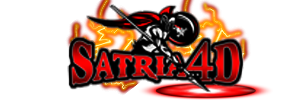
Permainan judi togel hongkong hari ini sejatinya merupakan game yang sangat menguntungkan. Selain menguntungkan togel hongkong pools juga sangat mudah untuk di mainkan. Kamu tinggal menebak nomor keluaran hk 2022 selanjutnya. Jika tebakan anda dan hasil pengeluaran hk hari ini sesuai, maka anda akan mendapatkan hadiah berupa hk prize. Nomor togel hongkong malam ini yang terbaru bisa kalian lihat pada data hk 2022 terlengkap yang telah kami sediakan dalam bentuk format tabel yang rapi untuk kalian semuanya.
Jadi kalian tinggal mengunjungi situs medicalnewser.com jika ingin mengecek nomor togel hongkong keluar berapa malam ini. Sebagai penyedia nomor keluaran togel hongkong terpercaya tentunya kami menjamin keasliannya. Semua angka togel hkg sudah sesuai dengan bola jatuh di hongkong pools. Maka dari itulah bagi para bettor togel hk sebaiknya menyimpan alamat url situs medicalnewser.com ke dalam browser kesayangan anda. Sehingga anda akan lebih mudah jika ingin menyaksikan live draw toto hk prize.
Dapatkan Hasil Keluaran HK Hari Ini Tercepat Secara Live
Sebagai pemain judi toto hk prize tentunya kita selalu tidak sabaran untuk bisa mengetahui nomor hk terbaru. Sebagai agen terpercaya tentunya kami menyediakan hasil keluaran hk hari ini tercepat untuk anda. Tidak hanya itu, kalian juga bisa menikmati fitur live draw hk pools secara langsung. Setiap harinya di jam sebelas malam kami akan selalu mengumumkan nomor keluaran hongkong malam ini. Kami sangat memperhatikan ketepatan waktu result keluaran hk prize. Bisa memberikan hasil keluaran hk tercepat 2022 untuk para bettor merupakan sebuah kebanggaan untuk kami.
Semenjak dulu hongkongpools.com merupakan tempat utama bagi para bettor togel hk untuk melihat hasil hk hari ini. Namun pemerintah mengambil langkah tegas dengan memblokir akses masyarakat ke situs tersebut. Sehingga para pemain sekarang menjadi kesulitan untuk mendapatkan result keluaran hk terbaru. Hal ini tentunya menjadi kesempatan emas bagi orang-orang tidak bertanggung jawab untuk meraup keuntungan pribadi. Di ketahui beberapa bandar dan agen nakal memanipulasi angka keluaran hk pools sehingga member selalu kalah. Sehingga kami mengambil keputusan untuk menyediakan data keluaran hk 2022 agar para bettor tidak lagi jatuh ke dalam perangkap mereka. Hanya di situs kami, anda bisa mendapatkan nomor keluaran togel hk tercepat dengan kualitas premium.
Result Pengeluaran HK Resmi Untuk Para Pemain Togel Hongkong
Mendapatkan nomor pengeluaran hk yang resmi merupakan salah satu kewajiban yang harus di penuhi oleh para bettor togel hongkong pools. Karena jika kita bermain menggunakan result pengeluaran hk yang tidak valid tentunya hanya akan menimbulkan kerugian untuk diri kita. Maka dari itulah kami selalu menghimbau para pemain toto hk atau togel hkg untuk selalu menggunakan data pengeluaran hk terlengkap 2022 kami. Karena semua nomor pengeluaran hongkong yang ada pada tabel kami sudah sangat sesuai dengan hasil jackpot live draw hk prize.
Dengan dukungan intenet yang begitu pesat, anda bisa dengan mudah menemukan informasi seputar result pengeluaran hk malam ini. Cara yang paling gampang adalah dengan menggunakan bantuan dari mesin pencarian seperti google. Namun situs-situs yang muncul pada halaman pertama tersebut belum tentu menawarkan hasil yang sah. Sebelum berlangganan tentunya kita harus mencocokan angka pengeluaran hk hari ini terlebih dahulu. Hal tersebut di maksudkan agar anda tidak terjebak ke dalam website yang tidak jelas. Dengan hadirnya kami sebagai situs pengeluaran togel hongkong malam ini tercepat, anda akan mendapatkan banyak kemudahan dalam bermain.
Tabel Data HK 2022 Untuk Prediksi Jitu Toto HK
Sebagian bettor toto hk pools kebanyakan hanya iseng-iseng melakukan taruhan karena memang sudah hobi. Namun jika nomor toto hk tersebut bisa tembus dan bisa menghasilkan uang untuk anda tentunya akan lebih menyenangkan. Walau hanya menebak angka keluaran togel hari ini, kita tidak boleh sembarangan memasang taruhan. Sebaiknya anda melakukan riset terlebih dahulu menggunakan tabel data hk master 2022 yang terlengkap. Dengan melakukan prediksi terlebih dahulu tentunya kemungkinan untuk memenangkan jackpot togel hk akan semakin terbuka lebar. Tidak mengherankan lagi apa bila seorang master prediksi bola jatuh hk selalu menyimpan data hk hari ini.
Ada beberapa metode yang bisa kamu pakai di tabel data hk pools kami. Salah satu yang paling sederhana adalah jangan pernah memasang angka yang telah keluar dalam kurun waktu 1 minggu terakhir. Jika kita harus mengingat semua nomor hk tentunya akan sangat merepotkan sekali. Oleh karena itu keberadaan situs data hk seperti kami sangatlah penting agar anda tidak salah dalam melakukan totobet hk. Para pembaca semuanya dapat mengakses semua data hk prize kami selama 24 jam non-stop.
Pasaran Togel Hari Ini Lainnya Yang Perlu Kamu Ketahui
Ada banyak sekali pasaran togel online resmi yang beredar di tengah masyarakat indonesia. Namun memang harus kita akui kalau togel hongkong pools memiliki market yang paling besar di indonesia. Akan tetapi jika anda sudah bosan memainkan pasaran togel hkg, maka sebaiknya anda mencoba peruntungan di pasaran togel hari ini lainnya. Salah satu contoh pasaran menguntungkan lainnya adalah togel singapore pools. Sama seperti totobet hk, togel singapore secara langsung di kelola oleh organinasi resmi pemerintah. Hal ini membuat permainan togel sgp sangat aman untuk kalian jajal.
Bagi kamu yang masih bingung untuk mencari nomor pengeluaran sgp ataupun data keluaran sgp tidak perlu panik. Karena kami menyediakan rekomendasi situs togel singapore terpercaya untuk kalian semua. Anda bisa menemukannya dengan bantuan google ataupun mengklik tombol login daftar pada menu di laman ini. Kemudian anda akan di arahkan ke situs resmi milik bandar togel hari ini yang terpercaya yaitu satria4d. Disana anda bisa klik pada menu result togel hari ini, lalu pilih togel singapore untuk melihat data sgp yang terbaru. Nah semoga semua informasi terkait togel hongkong yang telah kami sediakan bisa memberikan masukan positif untuk para bettor indonesia. Kami selalu bangga bisa melayani dan memberikan kemudahan bagi semua pemain judi togel hari ini.
| Tentang Situs Judi Bandar Togel Online Terpercaya Hari Ini 2022 | ||
|---|---|---|
| Min. Deposit: | Rp. 10.000,- | |
| Min. Bet | Rp. 1.000,- | |
| Pasaran Togel: | Togel Singapore (Toto SGP), Togel Hongkong (Toto HK), Togel Sidney, Togel Japan, Togel New Zealand, Togel Seoul, Togel BullsEye NZ, Togel Bangkok Pools | |
| Mata Uang: | IDR (Indonesian Rupiah) | |
| Metode Deposit: | BANK LOKAL, VIA PULSA, VIA E-WALLET (OVO, DANA, GOPAY, LINKAJA) | |
| Withdraw: | ONLINE 24 JAM | |
